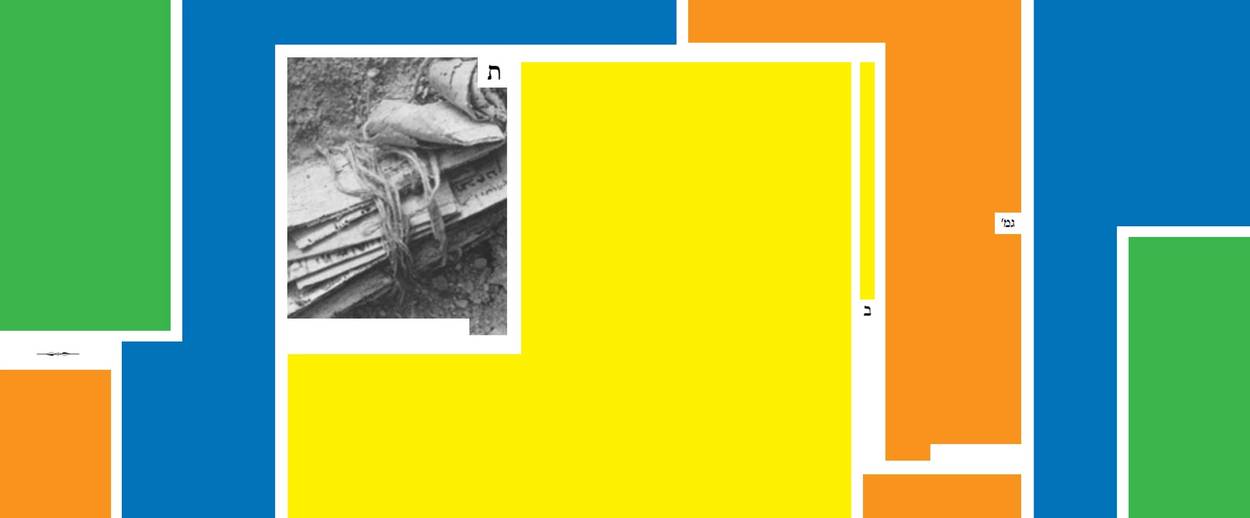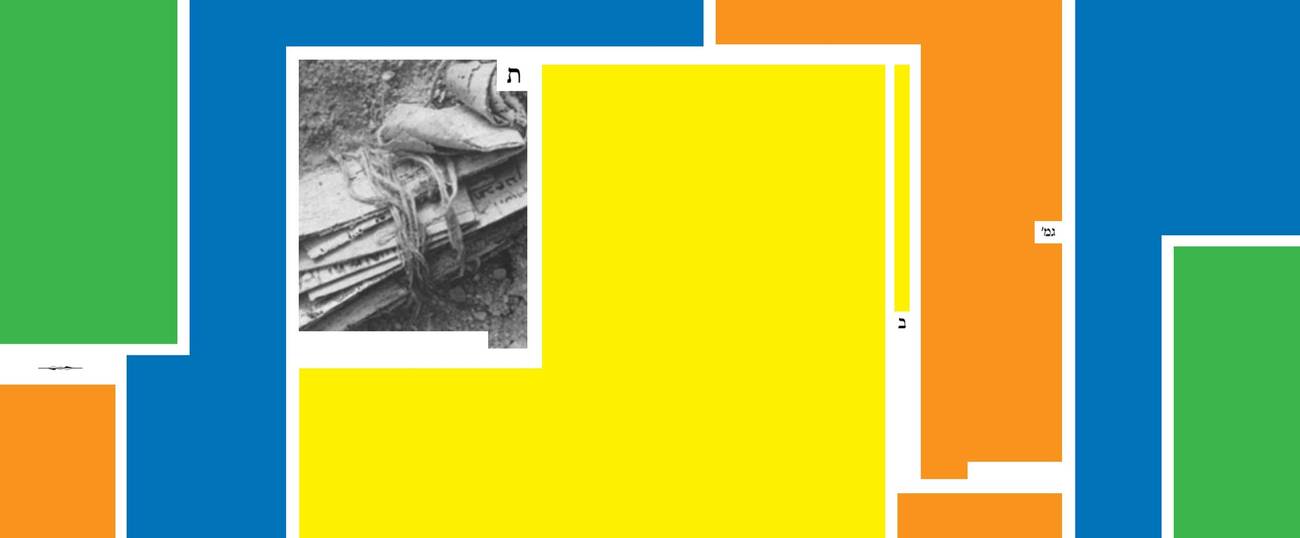The Art of Forgery
In this week’s ‘Daf Yomi’ Talmud study, the rabbis attempt to imagine every possible way to alter a legal document, and a coinciding method to thwart each of them




Literary critic Adam Kirsch is reading a page of Talmud a day, along with Jews around the world.
At 176 folio pages, Tractate Bava Batra is the longest in the Babylonian Talmud; in the Daf Yomi cycle, it takes six months to complete. Over the last two weeks, Daf Yomi readers began the 10th and final chapter of the tractate, in which the rabbis take up a very practical question: How is a valid legal document prepared? Throughout Bava Batra, we have learned about many kinds of transactions that involve written documents, including promissory notes, deeds of sale, deeds of gift, and wills. In modern society, such transactions usually leave a long documentary trail, because they involve lawyers, registrars, and probate courts. In Talmudic-era society, however, the physical possession of a signed piece of paper was the standard way to prove a claim of ownership or a debt. Such documents would ordinarily be written by professional scribes, who knew the legal formulas involved. But how should a document be composed to assure its authenticity and minimize the opportunity for forgery?
The mishna in Bava Batra 160a explains that there are two kinds of legal documents, “ordinary” and “tied.” A tied document offers a higher level of security: The portion of the parchment on which the text appears is folded over and stitched shut, and the witnesses sign on the exposed reverse side. For further protection, an ordinary document requires the signatures of two witnesses, while a tied document needs three. The technique of “tying” was apparently very ancient, since there seems to be a mention of it in the book of Jeremiah: “So I took the deed of purchase, that which was sealed, the terms and conditions, and that which was open.” Indeed, the Koren Talmud notes that in the 1960s, archeologists uncovered such tied documents dating from the era of the Bar Kochba rebellion, in the 2nd century CE.
But these terms, which were apparently clear to the authors of the mishna, were already ambiguous to the rabbis of the Gemara, who have to puzzle out exactly what they signify. “Where do the witnesses sign on a tied document?” Rav Huna says that they sign between each tied fold—he envisions the document being folded accordion-like, creating a number of small folds—while Rav Yirmeya bar Abba says that they sign on the back of the written side. However, the signatures must appear “opposite the writing,” not lower down on the page.
The reason for this becomes clear later in the discussion when the rabbis are considering the risk that a tied document could be altered without the knowledge of the witnesses. In an ordinary document, the witnesses sign immediately after the end of the text, which prevents anyone from adding to it. But if a document is signed on the back, what is to prevent someone from opening it up and adding to the text, thus changing the meaning of the agreement? To prevent this, the Gemara explains, at the conclusion of the text the scribe writes the words, “Confirmed and established.” This shows that everything above these words is part of the original contract; anything added later would be illegal.
But this doesn’t end the discussion because ink on parchment can be scraped off, which makes it possible to erase part of the text. What if someone erased the words “confirmed and established,” added new language to the document, and then wrote a new “confirmed and established” after it? To prevent this from happening, Rabbi Yochanan ruled that any document that contains words written over an erasure is invalid. If corrections must be made during the drafting, they have to be added between the lines of the original text, and all such corrections must be listed and verified at the close of the document.
But erasure is only one way of altering a document, and the Gemara goes on to consider even more devious kinds of forgery. What if the last line of the document contains something detrimental to one of the parties, and he simply cuts it off? On an ordinary document, this would be impossible, since the names of the witnesses come below the text, so they would get cut off as well. With a tied document, the security measure proposed by Rabbi Yirmeya bar Abba is to have the witnesses sign on the reverse of the written portion, so that if you clipped off the last line of the text, you would also clip off one of the witnesses’ names; since a tied contract needs three witnesses, losing one would render it invalid.
As Rami bar Chama observes, however, one could foil this measure by simply getting a new witness to sign the back of the document, gaining an extra signature to compensate for the one he intended to cut off. A forger could claim that he did this for an innocent reason, “to increase the number of witnesses,” which would add security to the document. To prevent this, Rav Chisda suggests that the witnesses sign the back of the document in a direction perpendicular to the text, starting at the bottom. In this way, clipping off the last line of the text on the front would mutilate the name of the first witness on the back, showing that the document had been altered.
Even this, however, would not necessarily be sufficient proof, since a forger could cut off just the first part of a witness’ name, leaving his patronymic: That is, “Reuven ben Yaakov” could be turned into just “ben Yaakov,” and this by itself would be a valid signature. And what if a witness signed not with his name but with a “distinguishing mark,” which was apparently common practice? As we learn in Bava Batra 161b, Rav used a drawing of a fish as his signature, Rav Chisda used a single letter, and Rava bar Rav Huna used a ship’s mast. What if the truncated witness’ name left such a mark behind, and the forger claimed it was a valid signature? To solve this problem, Mar Zutra suggests that all the witnesses must sign the back of the document on successive lines; in this way, cutting off the bottom of the text would mutilate all their names.
All these loopholes make one wonder why tied documents were considered better than ordinary ones in the first place. (And that’s before we get to the discussion of how tied documents were customarily backdated by a year, opening up whole new vistas of fraud and misunderstanding.) But with ordinary documents, too, where the witnesses sign under the text, the rabbis worry about various tricks. What if there is blank space between the end of the text and the witness signatures, and someone tries to add to the text? What if someone cuts off the whole top of the parchment, leaving just the blank space and the signatures, and uses it to forge an entirely new document? Various rules are instituted to stop these tricks, which only proves that they must have been pretty common. In a way, the whole discussion reminds me of 21st-century computer hacking, which is a perpetual arms race between security experts and cybercriminals: For each new safety measure incorporated into a piece of software, some hacker will find a way to thwart it. So too with Talmudic documents—which didn’t stop the rabbis from trying, any more than it stops today’s governments.
Adam Kirsch embarked on the Daf Yomi cycle of daily Talmud study in August 2012. To catch up on the complete archive, click here.
Adam Kirsch is a poet and literary critic, whose books include The People and the Books: 18 Classics of Jewish Literature.